Reconsidering Race: Social Science Perspectives on Racial Categories in the Age of Genomics Kazuko Suzuki
https://ebookmass.com/product/reconsidering-race-social-scienceperspectives-on-racial-categories-in-the-age-of-genomics-kazukosuzuki/
ebookmass.com
Reservoir Simulations Shuyu Sun
https://ebookmass.com/product/reservoir-simulations-shuyu-sun/
ebookmass.com
Goodman and Gilman’s The Pharmacological Basis of Therapeutics, 13th Edition (Goodman and Gilman’S the Pharmacological Basis of Therapeutics) 13th Edition, (Ebook PDF)
https://ebookmass.com/product/goodman-and-gilmans-the-pharmacologicalbasis-of-therapeutics-13th-edition-goodman-and-gilmans-thepharmacological-basis-of-therapeutics-13th-edition-ebook-pdf/ ebookmass.com
New Zealand Landscape: Behind the Scene Williams



https://ebookmass.com/product/new-zealand-landscape-behind-the-scenewilliams/
ebookmass.com
1920s Fashion Sourcebook (Fashion Sourcebooks) Fiell

https://ebookmass.com/product/1920s-fashion-sourcebook-fashionsourcebooks-fiell/
ebookmass.com

https://ebookmass.com/product/peasants-making-history-living-in-anenglish-region-1200-1540-christopher-dyer/
ebookmass.com

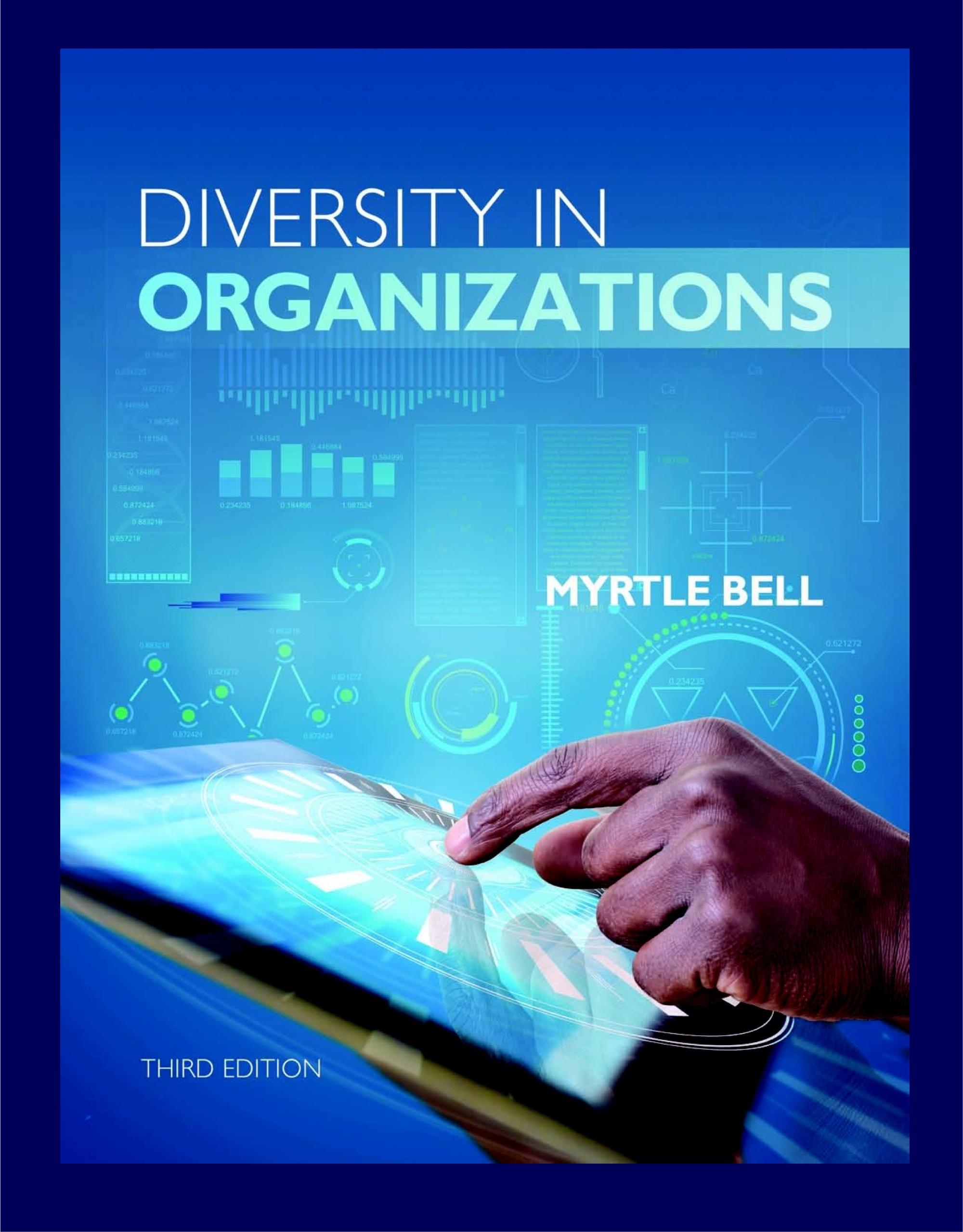
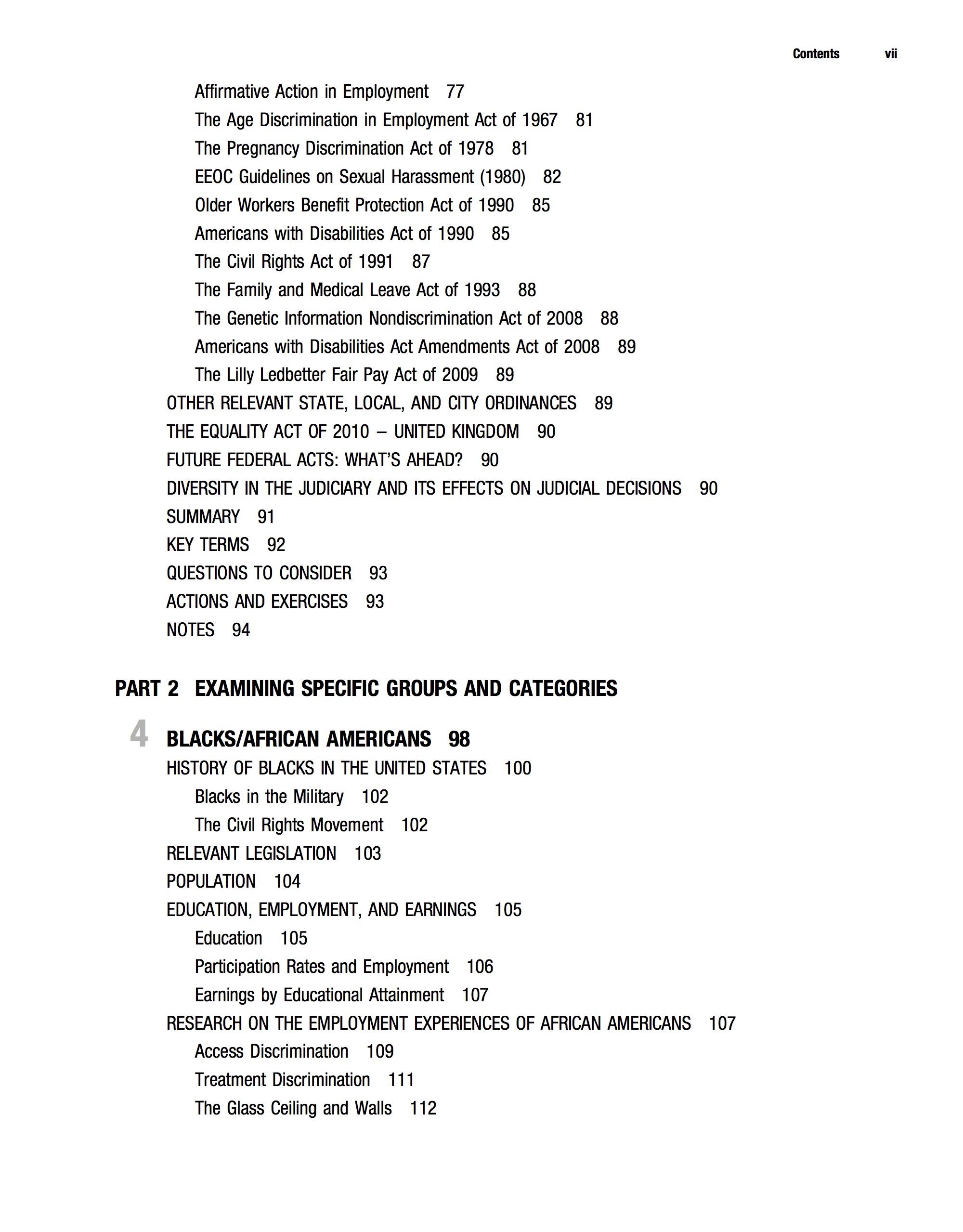
Affirmative Action in Employment 77
The Age Discrimination in Employment Act of 1967 81
The Pregnancy Discrimination Act of 1978 81
EEOC Guidelines on Sexual Harassment (1980) 82
Older Workers Benefit Protection Act of 1990 85
Americans with Disabilities Act of 1990 85
The Civil Rights Act of 1991 87
The Family and Medical Leave Act of 1993 88
The Genetic Information Nondiscrimination Act of 2008 88
Americans with Disabilities Act Amendments Act of 2008 89
The Lilly Ledbetter Fair Pay Act of 2009 89
OTHER RELEVANT STATE, LOCAL, AND CITY ORDINANCES 89
THE EQUALITY ACT OF 2010 - UNITED KINGDOM 90
FUTURE FEDERAL ACTS: WHAT'S AHEAD? 90
DIVERSITY IN THE JUDICIARY AND ITS EFFECTS ON JUDICIAL DECISIONS 90
SUMMARY 91
KEY TERMS 92
QUESTIONS TO CONSIDER 93
ACTIONS AND EXERCISES 93
NOTES 94
PART 2 EXAMINING SPECIFIC GROUPS AND CATEGORIES
4 BLACKS/AFRICAN AMERICANS 98
HISTORY OF BLACKS IN THE UNITED STATES 100
Blacks in the Military 102
The Civil Rights Movement 102
RELEVANT LEGISLATION 103 POPULATION 104
EDUCATION, EMPLOYMENT, AND EARNINGS 105 Education 105
Participation Rates and Employment 106
Earnings by Educational Attainment 107
RESEARCH ON THE EMPLOYMENT EXPERIENCES OF AFRICAN AMERICANS 107
Access Discrimination 109
Treatment Discrimination 111
The Glass Ceiling and Walls 112
8

RELEVANT LEGISLATION 204
Race Discrimination against Whites 206
Discrimination against Whites in Favor of Hispanics 207
Termination of Whites for Refusing to Comply with Discrimination against Minorities 207
Associational Discrimination 208
POPULATION 209
EDUCATION, EARNINGS, AND EMPLOYMENT 209
RESEARCH ON WHITES AND DIVERSITY 210
Similarities and Differences in the Experiences of White Women and Men 211
White Ethnic Identity 212
Perceptions of "Quotas " and "Reverse Discrimination " 213
Effects of Increasing Diversity on Dominant Group Members 215
DIVERSITY AND SOCIO-ECONOMIC STATUS FOR WHITES 215
RECOMMENDATIONS FOR INDIVIDUALS 217
RECOMMENDATIONS FOR ORGANIZATIONS 219
SUMMARY 219
KEY TERMS 220
QUESTIONS TO CONSIDER 220
ACTIONS AND EXERCISES 221
NOTES 221
NATIVE AMERICANS AND MULTI-RACIAL GROUP MEMBERS 226
HISTORY OF AMERICAN INDIANS IN NORTH AMERICA 228
POPULATION 230
EDUCATION, EMPLOYMENT, AND EARNINGS 232
RELEVANT LEGISLATION 233
RESEARCH ON AMERICAN INDIANS AT WORK 235
AMERICAN INDIAN AND ALASKAN NATIVE WOMEN 235
MULTl-RACIAL GROUP MEMBERS 236
Introduction and History 237
Blacks and Racial Determination 237
POPULATION 238
RELEVANT LEGISLATION 239
AMERASIANS 240
RECOMMENDATIONS FOR INDIVIDUALS AND ORGANIZATIONS 240
Native Americans and Alaska Natives 240
Multi-Racial Group Members 241
SUMMARY 241
KEY TERMS 242
QUESTIONS TO CONSIDER 242
ACTIONS AND EXERCISES 243
NOTES 243

SEX AND GENDER 248
RELEVANT LEGISLATION 250
POPULATION 251
EDUCATION 251
PARTICIPATION AND EARNINGS
Participation Rates 253
Sex Segregation 253
Income 255
GEN DER ROLE SOCIALIZATION
SEX DISCRIMINATION 261
SEXUAL HARASSMENT 265 252 256
Sexual Harassment of Women 266
Sexual Harassment of Men 267
THE GLASS CEILING AND OTHER GLASS BOUNDARIES 268
SEX , RACE , AND ETHNICllY 271
White Women and Women of Color 271
UNIQUE GEN DER ISSUES 272
Gender and Poverty 272
Negotiating Pay 273
RECOMMENDATIONS FOR INDIVIDUALS AND ORGANIZATIONS 273
Curbing Sexual Harassment 274
Breaking the Glass Boundaries 275
SUMMARY 276
KEY TERMS 276
QUESTIONS TO CONSIDER 277
QUESTIONS TO CONSIDER-FEDEX CASE 277
ACTIONS AND EXERCISES 277
NOTES 278
13 AGE 358
HISTORICAL BACKGROUND 360
RELEVANT LEGISLATION FOR OLDER WORKERS 361
Selected EEOC Cases Involving Older Age Discrimination Claims 363
LEGAL PROTECTIONS FOR YOUNGER WORKERS 365
POPULATION , PARTICIPATION RATES , AND EMPLOYMENT 365
An Intergenerational Workforce 367
EDUCATION 368
RESEARCH ON EMPLOYMENT EXPERIENCES OF OLDER WORKERS 369
Age, Accidents , and Injuries at Work 370
Training and Development 370
Bridge Employment and Layoffs 371
Older Women at Work 373
RESEARCH ON EMPLOYMENT EXPERIENCES OF YOUNGER WORKERS 375
Sexual Harassment of Teen Workers and the EEOC ' s Youth@Work Initiative 375
Long-term Consequences of Harassment of Young Workers 377
RECOMMENDATIONS FOR INDIVIDUALS 377
RECOMMENDATIONS FOR ORGANIZATIONS 379
SUMMARY 380
KEY TERMS 380
QUESTIONS TO CONSIDER 380
ACTIONS AND EXERCISES 381
NOTES 381
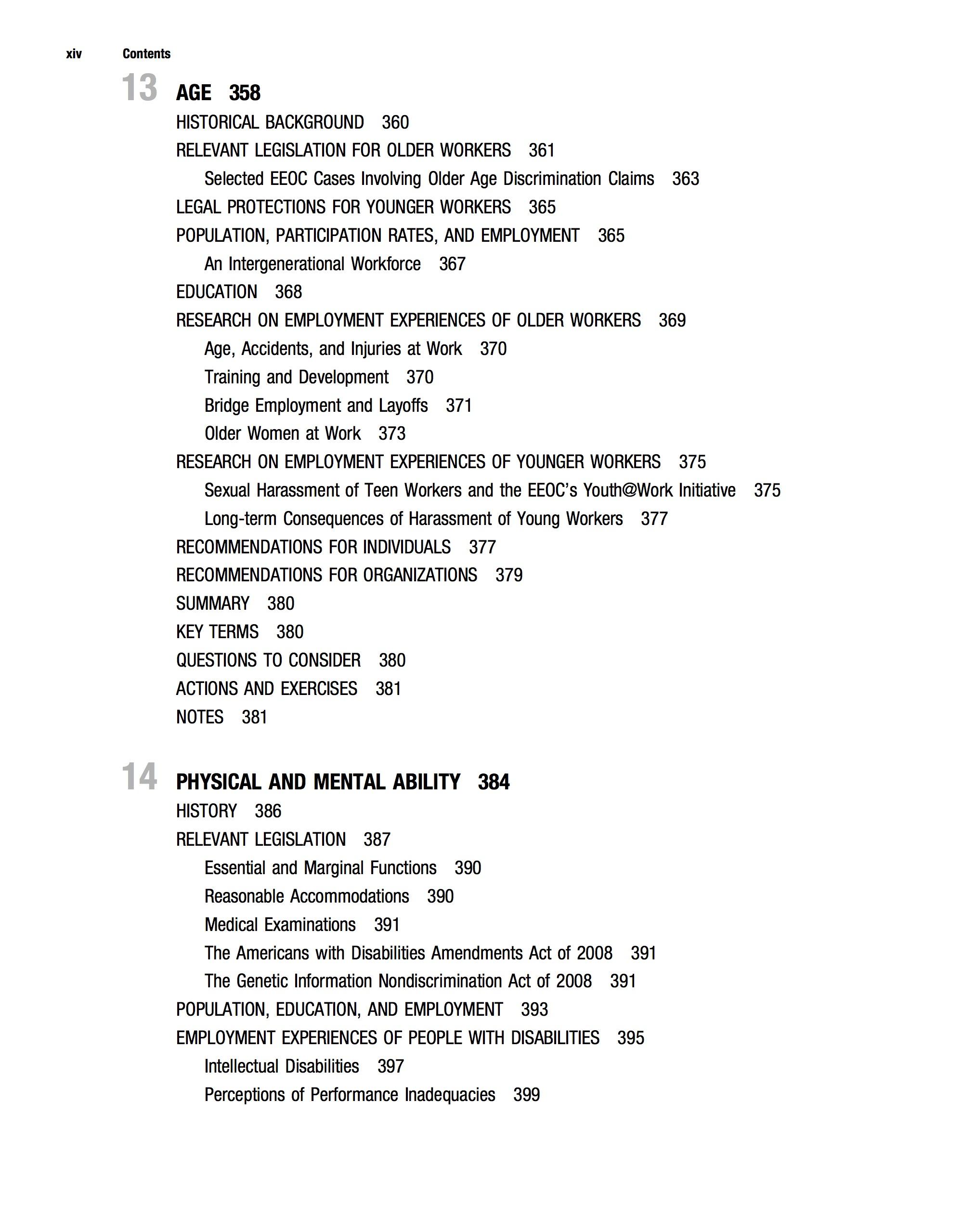
14 PHYSICAL AND MENTAL ABILITY 384
HISTORY 386
RELEVANT LEGISLATION 387
Essential and Marginal Functions 390
Reasonable Accommodations 390
Medical Examinations 391
The Americans with Disabilities Amendments Act of 2008 391
The Genetic Information Nondiscrimination Act of 2008 391
POPULATION , EDUCATION , AND EMPLOYMENT 393
EMPLOYMENT EXPERIENCES OF PEOPLE WITH DISABILITIES 395
Intellectual Disabilities 397
Perceptions of Performance Inadequacies 399

In the years since I wrote the first edition of Diversity in Organizations, many significant events related to diversity have occurred. In 2008, the United States elected its first Black president, the man identified as "Barack Obama, U.S. Senator" in the multiracial chapter of the first edition. Although my prescient Goolsby Leadership students in the spring of 2006 referred to him as "the hope of our generation," when I wrote that feature in 2005, I had no thought that Senator Obama would be elected U.S. president. That he was elected was momentous in and of itself, as were the diverse backgrounds of the people who voted for him.
Obama's election in 2008 and re-election in 2012 led to claims of a "post-racial" America, which are far from being realized, as evident, in part, by the race-based hatred and criticism directed toward him. As I began writing the third edition and once again investigating the status of each racial and ethnic group, women and men, people with disabilities, and other non-dominant group members, it became even more clear that far from being "post-racial," the need for diversity research and education remains strong. Blacks continue to have nearly twice the unemployment rate of Whites a problem that persists even at the same education levels, and that has been the case for many decades. Racial profiling and police brutality against African American men, women, and children, often with impunity, continue. The male-female wage gap remains tenacious, even though women now earn more college and graduate degrees than men earn. Sexual harassment, discrimination, and segregation continue to be severe and pervasive problems for working women. For every non-dominant group, some disparities persist, and, in some cases, have worsened since the first and second editions of Diversity in Organizations. Anger, fear, and hatred pervade the news, social media, and many people's psyches, and perceptual and attitudinal gaps about race relations, inequality, and discrimination remain. On the other hand, increasing numbers of people are supporting and working for equality and inclusion. New legislation, social media, and innovative ways to get around barriers, such as using Title VII in cases of sexual orientation discrimination, are helping bring about positive change. Increasing numbers of organizational leaders seem to understand the power in diversity, and the business, moral, and ethical reasons to truly pursue inclusion. There is still much work to be done, but there is still progress amid retrenchment and there is still hope for a better, fairer, more just future for all of us, whose futures and hopes are inextricably intertwined. "If we go down, we go down together," is now clearer than ever. 1 1
After completing this chapter, readers should have a firm understanding of the importance of diversity in organizations. Specifically, they should be able to:
• explain what "diversity" encompasses in the United States and some of the considerations used in determining the relevant diversity concerns in other areas.
• discuss changing population demographics and associated effects on workforce and customer diversity.
• explain interrelationships among diversity, discrimination, and inclusion.
• discuss research on the individual and organizational benefits of diversity and inclusion.

Changing population demographics and changing attitudes toward diversity have considerably increased diversity in many organizations, yet discrimination, inequality, and exclusion persist. Many organizations are more diverse than in the past, yet sexual harassment and segregation, glass ceilings and walls, and social hierarchies remain. 1
Organizational context is important in determining diversity's effect on performance. Properly managed, diversity and inclusion can benefit organizations in the areas of cost, resource acquisition, marketing, creativity, problem solving, and system flexibility.
If an organization develops a reputation for valuing all types of employees and customers, it will become known as an organization in which workers and customers from all backgrounds feel they will be treated fairly.
Working in and learning in environments with people who are different can benefit individuals through intellectual engagement, perspective taking, and greater understanding of the implications and benefits of diversity.

What Is Diversity?
In this book, diversity is defined as real or perceived differences among people in such areas as race, ethnicity, sex, age , physical and mental ability, sexual orientation, religion , work and family status, weight and appearance, social class, and other identity-based attributes that affect their interactions and relationships. 2 These focal areas encompass differences that are based on power or dominance relations among groups, particularly "identity groups," which are the collectivities people use to categorize themselves and others. 3 Identity groups are often readily apparent to others , sources of strong personal meaning , and related to historical disparities among groups in treatment, opportunities, and outcomes.
The definition of diversity includes the terms real and perceived to acknowledge the social constructions of many areas of difference. In particular, although race is socially constructed, perceptions of race , beliefs about people of different races, and discrimination on the bas is of race strongly affect people's life chances and experiences. 4 Similarly, gender is also socially constructed, representing perceptions of how males and females should behave, rather than being representative of biological differences between the sexes that might cause males and females to behave differently. As do perceived racial differences , beliefs about the differences between males and females strongly affect the expectations of, experiences of, and opportunities for girls , boys , men , and women in families, society , and organizations.
In contrast to the categories of focus in this book , some research has explored diversity in terms of functional area (e.g., marketing , finance , or accounting) , tenure, values , attitudes , and social class as they affect people's organizational experiences. These categories may also be sources of real or perceived differences that affect people 's interactions , outcomes, and relationships at work. For example, engineering , finance , and accounting managers typically earn more and have greater occupational status than human resources managers. (The former positions are also more likely to be held by men than the latter position; sex typing and segregation of jobs, and their negative consequences for women, will be discussed in later chapters.) However, one's functional area at work is not likely to fit the criteria for identity groups that is, readily apparent, or associated with historical disparities in treatment, opportunities , or outcomes in society at large.
Social class, referring to those "who occupy a similar position in the economic system of production, distribution, and consumption of goods and services in industrial societies" 5 meets some of the key criteria for inclusion (e.g., having strong personal meaning and stemming from or co inciding with significant power differences among groups; in some situations , it is also readily apparent) Although the
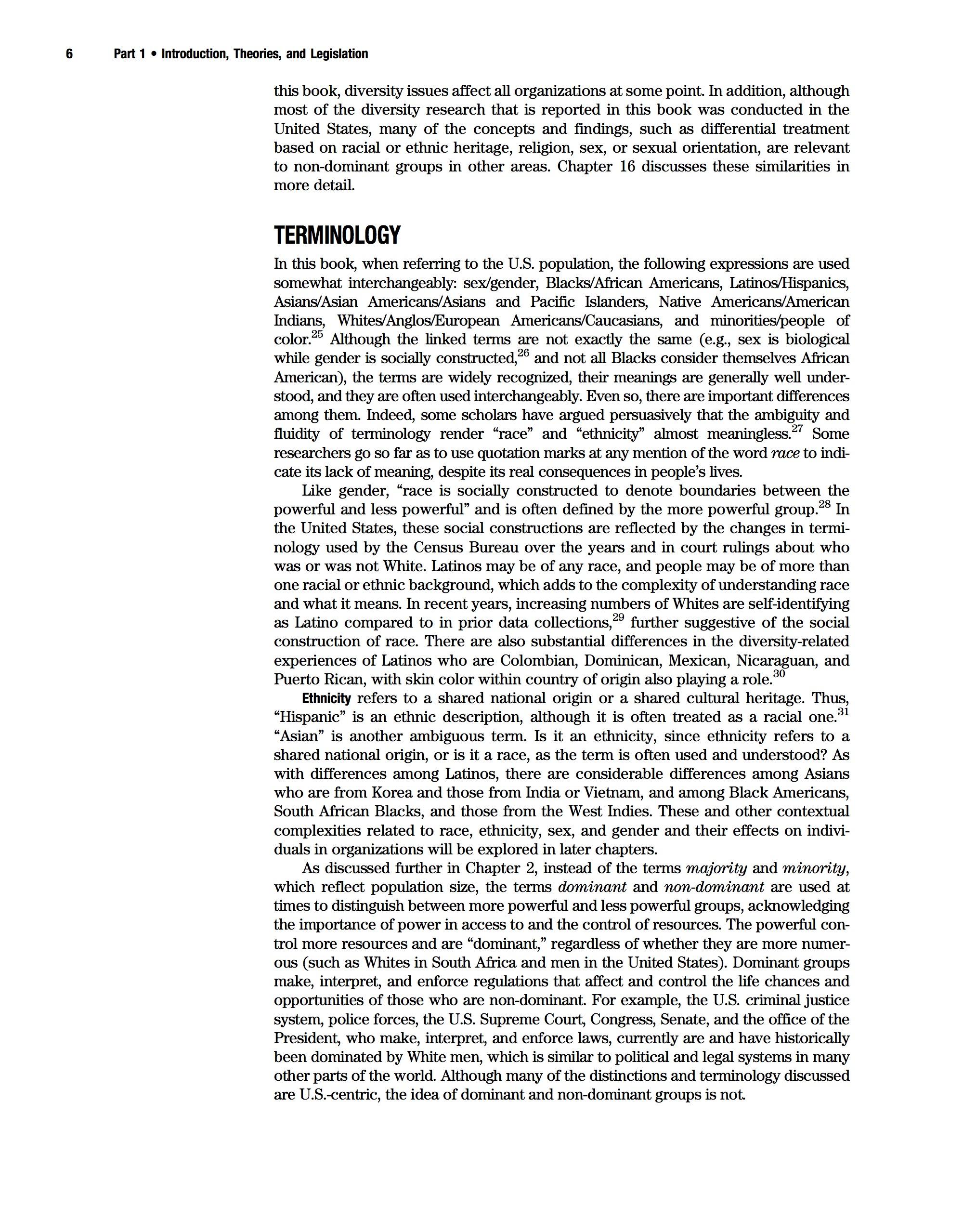
this book, diversity issues affect all organizations at some point. In addition, although most of the diversity research that is reported in this book was conducted in the United States, many of the concepts and findings, such as differential treatment based on racial or ethnic heritage, religion, sex, or sexual orientation, are relevant to non-dominant groups in other areas. Chapter 16 discusses these similarities in more detail.
TERMINOLOGY
In this book, when referring to the U.S. population, the following expressions are used somewhat interchangeably: sex/gender, Blacks/African Americans, Latinos/Hispanics, Asians/Asian Americans/Asians and Pacific Islanders, Native Americans/American Indians, Whites/Anglos/European Americans/Caucasians, and minorities/people of color. 25 Although the linked terms are not exactly the same (e.g., sex is biological while gender is socially constructed, 26 and not all Blacks consider themselves African American), the terms are widely recognized, their meanings are generally well understood, and they are often used interchangeably. Even so, there are important differences among them. Indeed, some scholars have argued persuasively that the ambiguity and :fluidity of terminology render "race" and "ethnicity" almost meaningless. 27 Some researchers go so far as to use quotation marks at any mention of the word race to indicate its lack of meaning, despite its real consequences in people's lives.
Like gender, "race is socially constructed to denote boundaries between the powerful and less powerful" and is often defined by the more powerful group. 28 In the United States, these social constructions are reflected by the changes in terminology used by the Census Bureau over the years and in court rulings about who was or was not White. Latinos may be of any race, and people may be of more than one racial or ethnic background, which adds to the complexity of understanding race and what it means. In recent years, increasing numbers of Whites are self-identifying as Latino compared to in prior data collections, 29 further suggestive of the social construction of race. There are also substantial differences in the diversity-related experiences of Latinos who are Colombian, Dominican, Mexican, Nicaraguan, and Puerto Rican, with skin color within country of origin also playing a role. 30
Ethnicity refers to a shared national origin or a shared cultural heritage. Thus, "Hispanic" is an ethnic description, although it is often treated as a racial one. 31 "Asian" is another ambiguous term. Is it an ethnicity, since ethnicity refers to a shared national origin, or is it a race, as the term is often used and understood? As with differences among Latinos, there are considerable differences among Asians who are from Korea and those from India or Vietnam, and among Black Americans, South African Blacks, and those from the West Indies. These and other contextual complexities related to race, ethnicity, sex, and gender and their effects on individuals in organizations will be explored in later chapters.
As discussed further in Chapter 2, instead of the terms majority and minority, which reflect population size, the terms dominant and non-dominant are used at times to distinguish between more powerful and less powerful groups, acknowledging the importance of power in access to and the control of resources. The powerful control more resources and are "dominant," regardless of whether they are more numerous (such as Whites in South Africa and men in the United States). Dominant groups make, interpret, and enforce regulations that affect and control the life chances and opportunities of those who are non-dominant. For example, the U.S. criminal justice system, police forces, the U.S. Supreme Court, Congress, Senate, and the office of the President, who make, interpret, and enforce laws, currently are and have historically been dominated by White men, which is similar to political and legal systems in many other parts of the world. Although many of the distinctions and terminology discussed are U.S.-centric, the idea of dominant and non-dominant groups is not
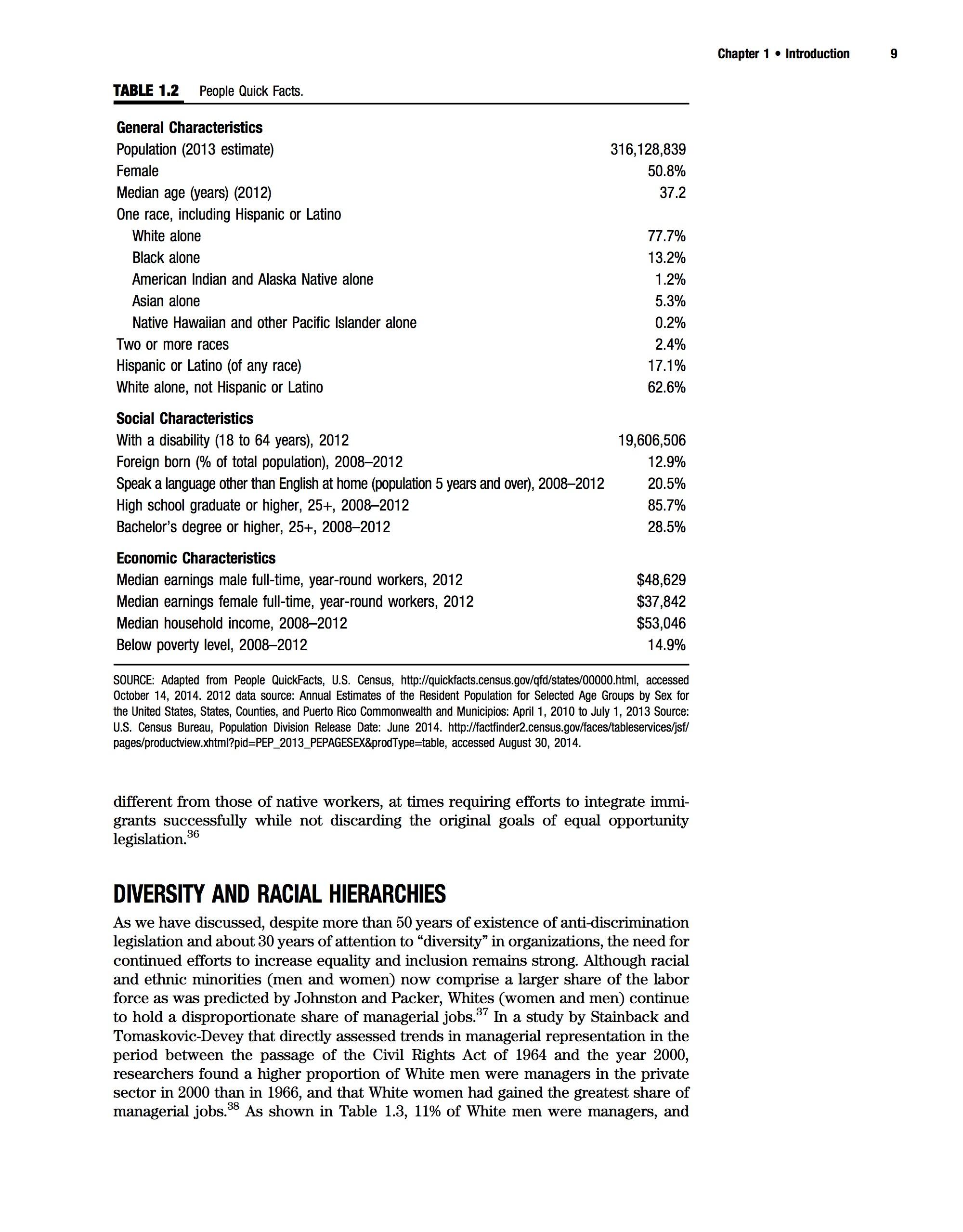
TABLE 1.2 People Quick Facts.
General Characteristics
Population (2013 estimate)
Female
Median age (years) (2012)
One race, including Hispanic or Latino
White alone
Black alone
American Indian and Alaska Native alone
Asian alone
Native Hawaiian and other Pacific Islander alone
Two or more races
Hispanic or Latino (of any race)
White alone, not Hispanic or Latino
Social Characteristics
With a disability (18 to 64 years), 2012
Foreign born (0/o of total population), 2008-2012
Speak a language other than English at home (population 5 years and over), 2008-2012
High school graduate or higher, 25+, 2008-2012
Bachelor's degree or higher, 25+, 2008-2012
Economic Characteristics
Median earnings male full-time, year-round workers, 2012
Median earnings female full-time, year-round workers, 2012
Median household income, 2008-2012
Below poverty level, 2008-2012
SOURCE: Adapted from People Quickfacts, U S. Census, http://quickfacts.census.gov/qfd/states/OOOOO.html, accessed October 14, 2014. 2012 data source: Annual Estimates of the Resident Population for Selected Age Groups by Sex for the United States, States, Counties, and Puerto Rico Commonwealth and Municipios: April 1, 2010 to July 1, 2013 Source: U.S. Census Bureau, Population Division Release Date: June 2014. http://factfinder2.census.gov/faces/tableservices/jsf/ pages/productview.xhtml?pid=PEP 2013 PEPAGESEX&prodType=table, accessed August 30, 2014.
different from those of native workers, at times requiring efforts to integrate immigrants successfully while not discarding the original goals of equal opportunity legislation. 36
DIVERSITY AND RACIAL HIERARCHIES
As we have discussed, despite more than 50 years of existence of anti-discrimination legislation and about 30 years of attention to "diversity" in organizations, the need for continued efforts to increase equality and inclusion remains strong. Although racial and ethnic minorities (men and women) now comprise a larger share of the labor force as was predicted by Johnston and Packer, Whites (women and men) continue to hold a disproportionate share of managerial jobs. 37 In a study by Stainback and Tomaskovic-Devey that directly assessed trends in managerial representation in the period between the passage of the Civil Rights Act of 1964 and the year 2000, researchers found a higher proportion of White men were managers in the private sector in 2000 than in 1966, and that White women had gained the greatest share of managerial jobs. 38 As shown in Table 1.3, 11% of White men were managers, and
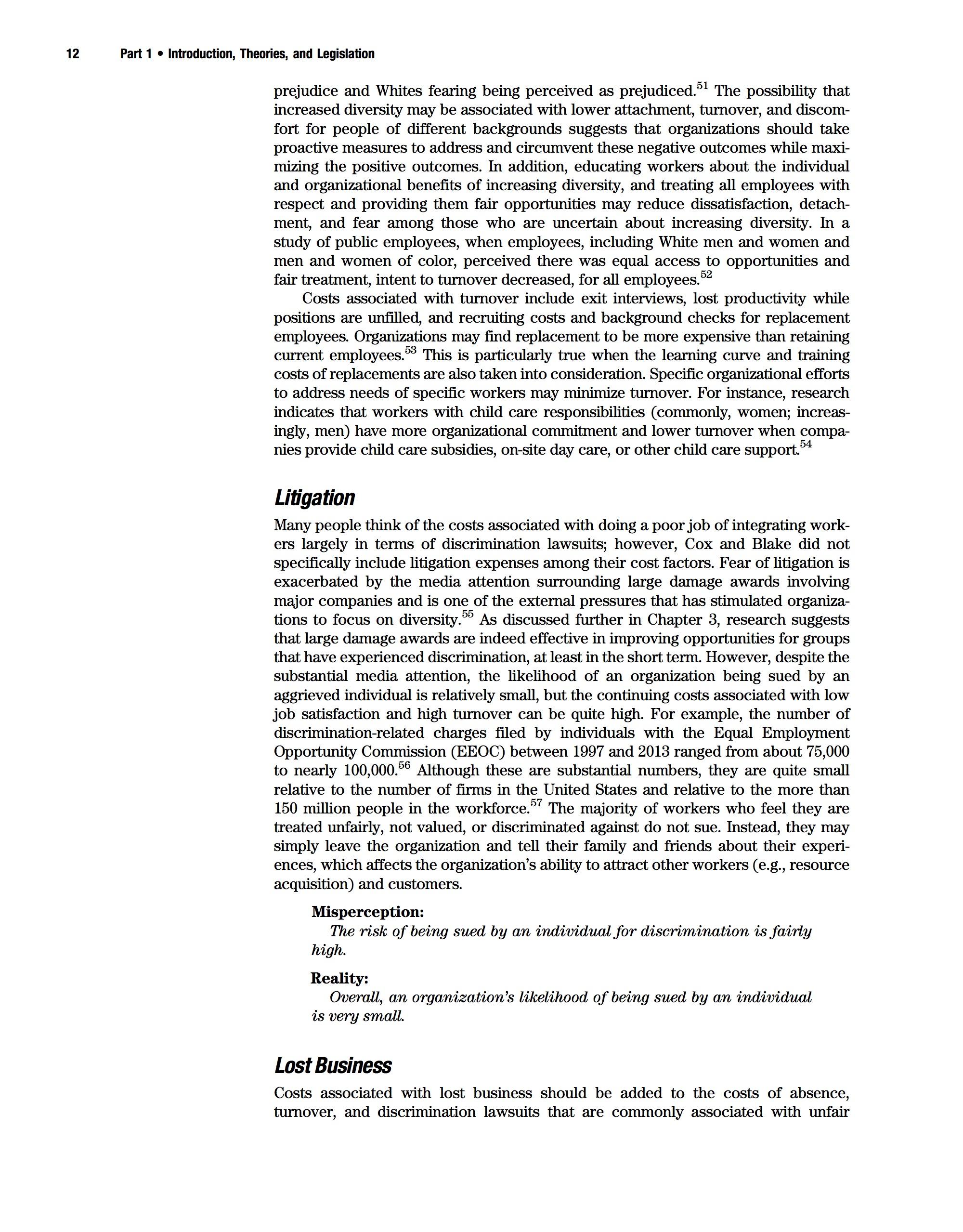
prejudice and Whites fearing being perceived as prejudiced. 51 The possibility that increased diversity may be associated with lower attachment, turnover, and discomfort for people of different backgrounds suggests that organizations should take proactive measures to address and circumvent these negative outcomes while maximizing the positive outcomes. In addition, educating workers about the individual and organizational benefits of increasing diversity, and treating all employees with respect and providing them fair opportunities may reduce dissatisfaction, detachment, and fear among those who are uncertain about increasing diversity. In a study of public employees, when employees, including White men and women and men and women of color, perceived there was equal access to opportunities and fair treatment, intent to turnover decreased, for all employees. 52
Costs associated with turnover include exit interviews, lost productivity while positions are unfilled, and recruiting costs and background checks for replacement employees. Organizations may find replacement to be more expensive than retaining current employees. 53 This is particularly true when the learning cmve and training costs of replacements are also taken into consideration. Specific organizational efforts to address needs of specific workers may minimize turnover. For instance, research indicates that workers with child care responsibilities ( commonly, women; increasingly, men) have more organizational commitment and lower turnover when companies provide child care subsidies, on-site day care, or other child care support. 54
Litigation
Many people think of the costs associated with doing a poor job of integrating workers largely in terms of discrimination lawsuits; however, Cox and Blake did not specifically include litigation expenses among their cost factors. Fear of litigation is exacerbated by the media attention surrounding large damage awards involving major companies and is one of the external pressures that has stimulated organizations to focus on diversity. 55 As discussed further in Chapter 3, research suggests that large damage awards are indeed effective in improving opportunities for groups that have experienced discrimination, at least in the short term. However, despite the substantial media attention, the likelihood of an organization being sued by an aggrieved individual is relatively small, but the continuing costs associated with low job satisfaction and high turnover can be quite high. For example, the number of discrimination-related charges filed by individuals with the Equal Employment Opportunity Commission (EEOC) between 1997 and 2013 ranged from about 75,000 to nearly 100,000. 56 Although these are substantial numbers, they are quite small relative to the number of firms in the United States and relative to the more than 150 million people in the workforce. 57 The majority of workers who feel they are treated unfairly, not valued, or discriminated against do not sue. Instead, they may simply leave the organization and tell their family and friends about their experiences, which affects the organization's ability to attract other workers ( e.g., resource acquisition) and customers.
Misperception:
The risk of being sued by an individual for discrimination is fairly high.
Reality:
Overall, an organization's likelihood of being sued by an individual is very small.
Lost Business
Costs associated with lost business should be added to the costs of absence, turnover, and discrimination lawsuits that are commonly associated with unfair
